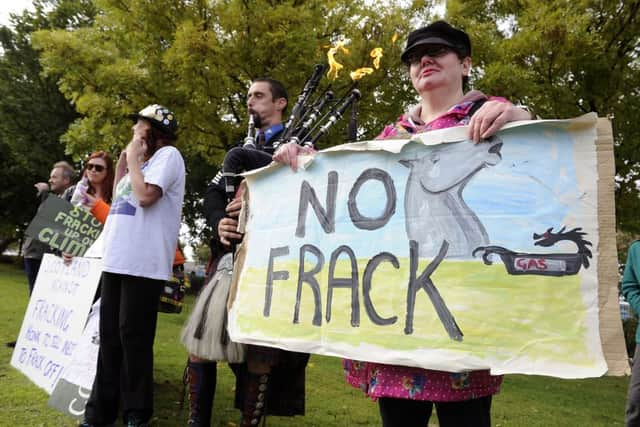Research says fracking isn't apocalyptic


This announcement was made six months after its own Independent Expert Scientific Panel had concluded that the technology exists to allow the safe extraction of the resource in Scotland subject to robust regulation being in place.
Further research was commissioned and studies considered economic, public health and climate change impacts and the issues surrounding seismicity, transport and de-commissioning. The reports were published last November and perhaps unsurprisingly, given the view of the Panel, the overall conclusion drawn by the researchers is that, provided the planning and environmental impact assessment process is properly implemented and best operational practice is applied by operators against a strong seamless regulatory framework, significant adverse impacts on local communities can be avoided.
Advertisement
Hide AdAdvertisement
Hide AdAlthough there was a recognition that there may be benefits for energy security and Scottish industry if new domestic sources of natural gas production became available, more tellingly, the economic impact report also highlighted the importance to Scotland’s large and well-established petro-chemical industry of being able to source ready supplies of feedstock in the form of natural gas liquids from a secure domestic supply.
Specific note was made of the fact that the 10 million tonnes of chemical products that are manufactured annually at Ineos’ Grangemouth plant are used as the building blocks for a wide range of everyday consumer goods. And of the fact, too, that in the US the development of shale gas has resulted in US feedstock products now being nearly half the price of that of identical European products.
For members of the public and their elected representatives who are concerned about the industrialisation of the Scottish countryside, if shale gas development were given the go-ahead, the findings of the “Economic Impact Assessment and Scenario Development” report prepared by KPMG should offer significant comfort. Taking their central scenario based on midpoint estimates of potential shale gas development in Scotland, the authors calculated that 20 [drilling] pads of 15 wells each would be built out over 11 years starting in 2023-2024, with each pad having an estimated 15-year production lifespan.
This apparently conservative assumption on drilling pad numbers reflects the fact, as the KPMG report points out, that the developable area of the Midland Valley is limited by factors such as urbanisation, faulting, water bodies, designated areas etc.
As pads are usually around the size of a football pitch (reducing to half that size once drilling is completed) and with a maximum of three pads being able to be constructed in any year, the concern expressed in some quarters that the Midland Valley of Scotland will come to resemble a Texan oilfield if shale gas development is allowed to proceed is somewhat fanciful.
The transport impacts research estimated that during the exploration and appraisal phases a well pad would generate around 190 HGV movements per week for a period of approximately two years. By way of comparison a warehouse distribution centre would be expected to generate around 5,000 two-way HGV movements over the same period.
So far as impact on house prices is concerned, the research found on the basis of existing studies that the evidence was inconclusive. While some research had indicated a fall in house prices ahead of drilling commencing, other studies found that in some areas of the US there had been significant increases in house prices in the area surrounding shale gas sites due to the demand for accommodation.
The public consultation process has now started, with the release last month of the consultation document entitled, Talking Fracking – A Consultation on Unconventional Oil and Gas. In announcing the start of the consultation, which is to run through to the end of May, the Scottish Government advised that it saw it as an opportunity for people to consider the evidence and present views on that evidence and the future of this industry in Scotland.
Advertisement
Hide AdAdvertisement
Hide AdOnce the consultation closes and the responses considered, the Scottish Government will again review the evidence and then put its recommendation to a vote in the Scottish Parliament. A final decision on whether or not unconventional oil and gas has a role in Scotland’s energy mix will then be made by the end of this year.
Sandy Telfer is a Partner with DLA Piper